Experiments
Monitoring Environmental Parameters and Human Influence in Forest Areas
Romania, Prahova
![]() Wallachia eHub
Wallachia eHub
Experiment objective
The objective of the MEPHIFA experiment is to develop a system for monitoring human influence in forest areas, which can also be used to record various environmental parameters such as temperature, humidity, light radiation levels, air pressure, etc.
Given the importance of the forest environment in maintaining ecosystems and the way in which the reduction of forested areas due to economic development is already influencing environmental conditions (global warming, extreme weather events and pollution), permanent monitoring of the forest environment by monitoring parameters and human activity in forested areas is a first step towards limiting and possibly creating a reversible mechanism for forest degradation. The system is also useful to achieve a rapid response time to natural disasters (fires, landslides, floods, etc.). The proposed system eliminates human presence by analyzing environmental information and signaling possible environmental events.
Challenges
-
- Challenge 1: The need for further implementation of European environmental legislation, in carrying out our own activities as well as the potential beneficiaries’ (environmental agencies, NGOs, government agencies with responsibilities in the field of environmental protection, local authorities, etc.) especially in the geographical area considered.
- Challenge 2: The need to reduce the operating costs for the specific services offered, as well as to minimize the risks for own staff (possible use of drone-type equipment for collecting data from sensors and forest mapping), for beneficiaries (non-invasive access in special status areas such as reservations) and for third parties.
- Challenge 3: The need to decrease the response time to critical events. In such situations, a good knowledge of the conditions in the field can allow teams to intervene more efficiently, with minimal human and material risks.
Implementation Solution
In order to save energy consumption, reading and primary processing of the signals will be done at certain time intervals (several minutes, for example), while the sensors are in a low consumption state (stand-by). The signals can be stored locally (data logger) and / or sent to a central station that further processes and interprets the results. Sensor networks are made for transmitting data from a sensor array to a data server. Depending on the extent of the monitored surface, data collection may also have aerial support. Thus, data collection can be done with drones. The communication, which represents the most energy intensive operation, will use a limited bandwidth. The network will use minimal energy resources, either by eliminating the communication or by closing the radio link when no communication is needed. The proposed system for detecting and signalling forest changes aims to protect the environment, mainly forests, by timely detection of illegal logging attempts.
The second phase of the project will focus on the analysis, testing and validation of the equipment
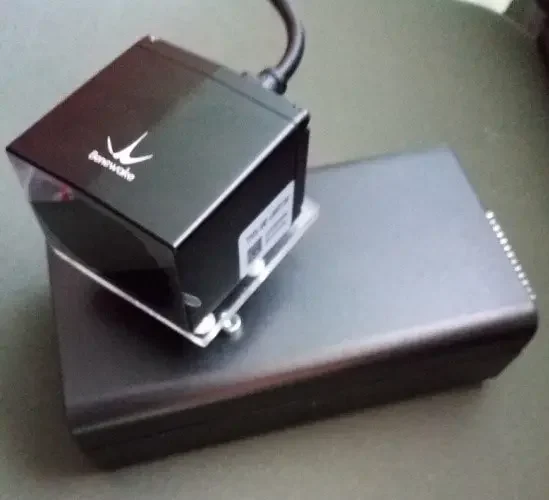
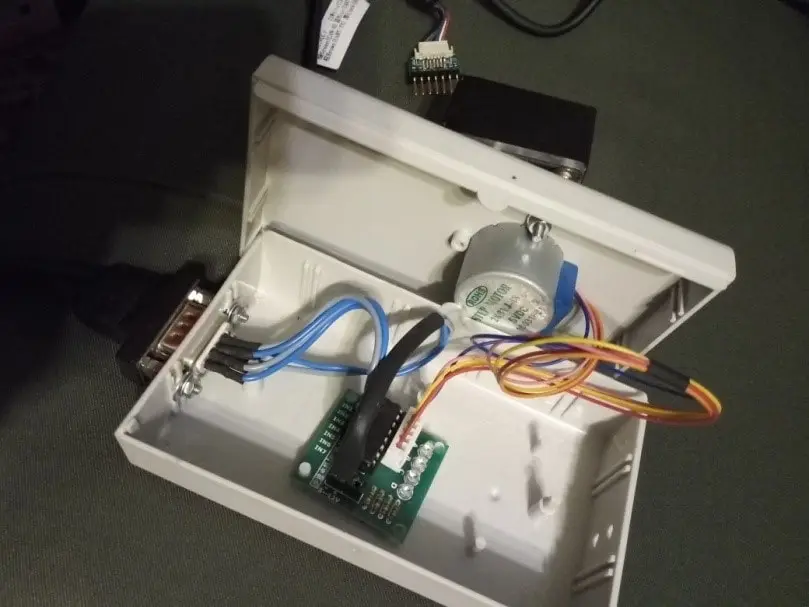
LiDAR devices (were build two) contains LiDAR sensor TF-03, stepper motor and electrical and mechanical interface
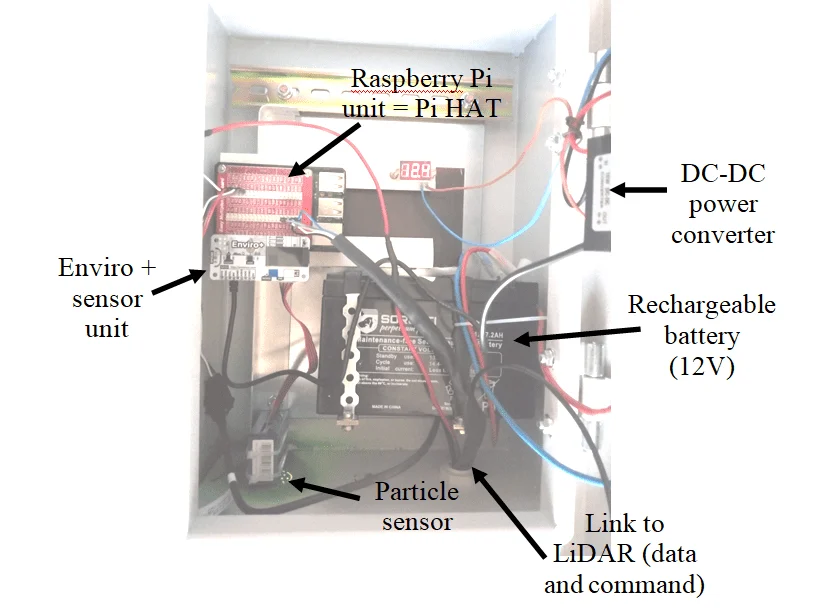
Entire equipment designed and made by TESAGON was packed in a metal box that ensures protection against weather conditions (electric panel has 25 x 20 x 15 cm, with additional 8 cm of LiDAR device), but still has space to extend functionality
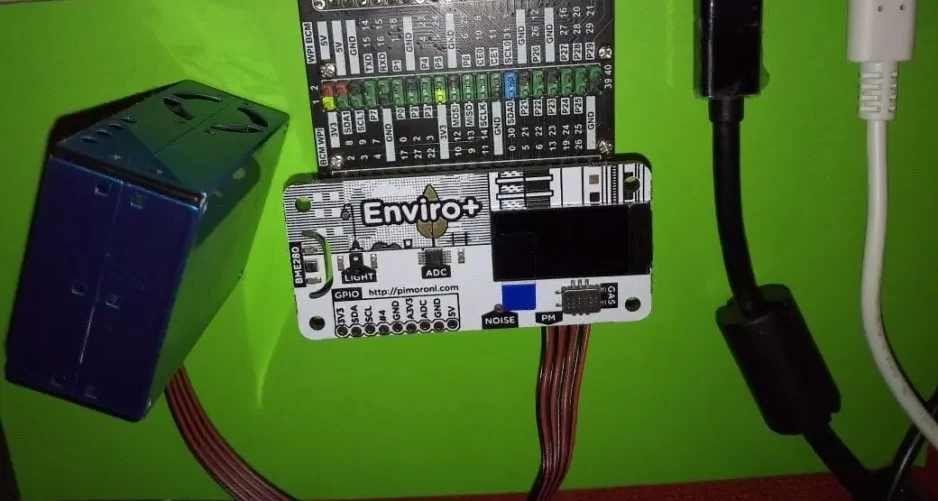
Multiple sensor board (right) and PMS (particle) sensor (left)
Results obtained
The realized experiment aims to develop equipment to monitor environment, especially the forest one, It is based on dedicated sensors for various environmental quantities and a LiDAR device. It track any changes in the forest (specific environmental parameters are followed, but also the illegal cutting of the forest) and has the advantage of a low-cost implementation. The LiDAR (an acronym of “light detection and ranging“or “laser imaging, detection, and ranging”) devices intended to be used is efficient to detect modified forest edge by mapping the analyzed areas. Innovative solutions for detecting changes in the environment and relief can be considered. Because, also, it uses common sensors and commercial components, it ensures a low cost and the possibility of extending this system to any forest area.
The components of the designed and manufactured LiDAR equipment are: the sensor itself, the servomotor and the mechanical and interface elements. The applications are made on the same device, a Raspberry Pi 3B+ embedded system (or can be any equivalent) for LiDAR (for reading data and stepper motor command) and the environment sensor (read eight environment quantities). Application developed can act like a data logger; all data from sensors are save on SD Card. Application can be customized on any requests.
Experimental data were presented in conferences. During the tests it was found that if the distance signal is controllable in terms of variability, in terms of signal strength, it has important variations, because the sensor is constantly looking to modulate its power, depending on the environment, distance and surface nature of analyzed objects. In other words, it is in the nature of the operation of the sensor this variability of the signal power generated by the sensor. Main objective of application is to computes the mean, or average, of the values in the set of input data points specified by sample length. Classical way to compute average of a numbers is arithmetic formula. Sample length is the length of each set of incoming data. Together with classical method was used statistical approach which provides more stability. This relation between statistical and arithmetic formulas is important and can be improved not including initial values. Initial data is unpredictable, because transient phase, when LiDAR sensor calibrate its power.
The environmental data complex sensors (Enviro+ Air Quality) it is used to measure, in the same module, many quantities like: BME280 temperature, pressure, humidity, LTR-559 light and proximity sensor, MICS6814 analogue gas sensor, ADS1015 analogue/digital converter, MEMS microphone. Additionally, can be use a particle sensor module (PMS5003 separate). The particle sensor can be used separately, but in this case was preferred to integrate it into Enviro+ Air Quality to use communication and power supplying from Enviro+ Air Quality module.
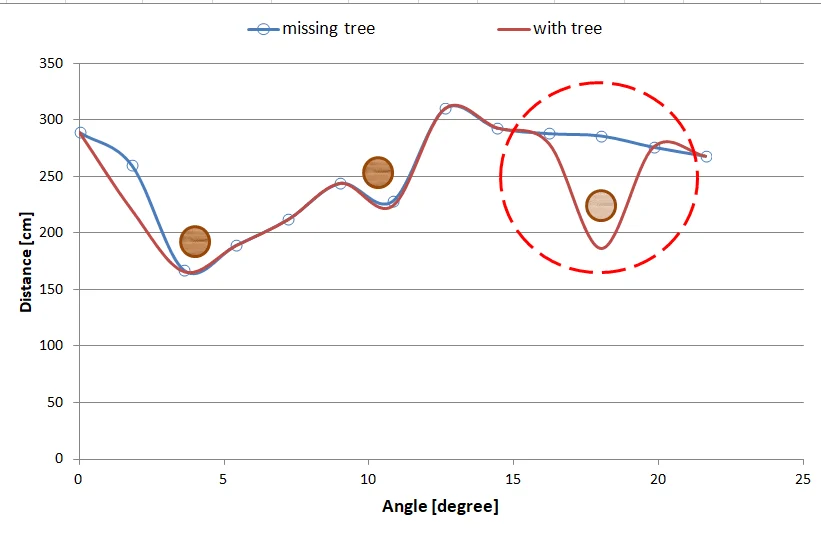
Example of data from LiDAR
Impact of the experiment
Proposed equipment can be a component of the need for further implementation of European environmental legislation, both in carrying out their own activities and potential beneficiaries (environmental agencies, non-governmental organizations, government agencies with responsibilities in the field of environmental protection, local authorities, etc.). Operating costs for the specific services offered as well as minimizing risks for its personnel. Also decrease reaction time for critical events (natural disasters or human influence). This equipment is versatile, easily can be adapted to any quantities; because of high grade of integration of sensors and LiDAR device, the operation of the equipment to monitoring environment is driven by the software.
Dissemination
Webinar Digital solutions for sustainable local development, October 29, 2021
Published papers (by TESAGON):
- Constantin Daniel Oancea, Ciprian Mihai Coman, Bogdan Corneliu Toma
Evaluation of the Use of LiDAR Type Systems in Environmental Protection, 2022 IEEE International Conference on Automation, Quality and Testing, Robotics (AQTR), May 19th – 21st 2022, Cluj-Napoca, pp. 1-5, doi: 10.1109/AQTR55203.2022.9801922.
Funding Agency: 10.13039/501100016134-FRAME
- Constantin Daniel Oancea
Optimizing the operation of the LiDAR sensor, 2022 8th International Conference on Energy Efficiency and Agricultural Engineering (EE&AE), 30 June 2022 – 02 July 2022, Ruse, Bulgaria, Electronic ISBN:978-1-6654-0709-0, USB ISBN:978-1-6654-0708-3, Print on Demand(PoD) ISBN:978-1-6654-0710-6, DOI: 10.1109/EEAE53789.2022.9831277.
Funding Agency: 10.13039/501100000780-European Commission
Also, TESAGON participate to all on-line meetings and webinars about MEPHIFA.
